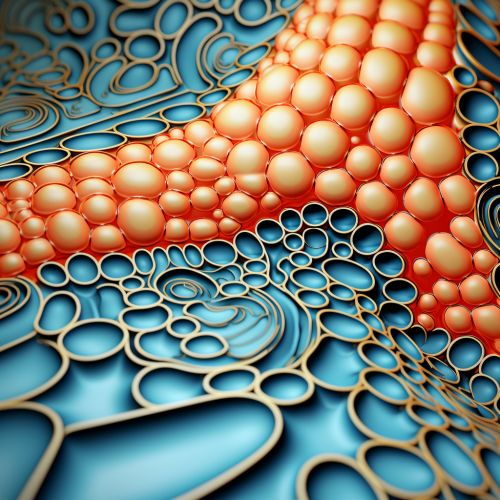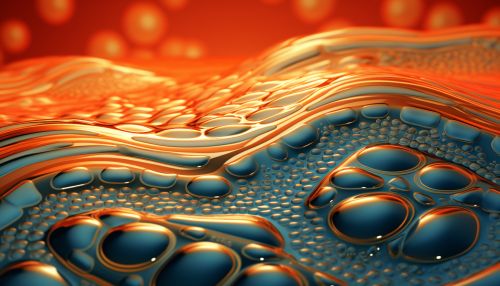Lipid bilayer
Overview
A lipid bilayer is a fundamental structure of most cell membranes in living organisms. It is composed of two layers (bilayer) of lipid molecules, which form a continuous barrier around cells and within cells, separating different cellular compartments. The lipid bilayer is a critical component of the cell, providing a framework for the diverse array of lipids and proteins that participate in essential cellular processes.


Composition
The lipid bilayer is primarily composed of phospholipids, which are a type of lipid molecule that has a hydrophilic (water-loving) head and a hydrophobic (water-fearing) tail. The hydrophilic head is attracted to water, while the hydrophobic tail repels water. This unique structure allows phospholipids to spontaneously form a bilayer in an aqueous environment, with the hydrophilic heads facing the water and the hydrophobic tails facing each other. This arrangement provides a stable barrier between two aqueous compartments.
Other types of lipids, such as cholesterol, are also present in the lipid bilayer. Cholesterol molecules are interspersed among the phospholipids, contributing to the fluidity and stability of the membrane. In addition to lipids, the bilayer also contains proteins that perform various functions, including transport of molecules across the membrane, signal transduction, and cell adhesion.
Properties
The lipid bilayer has several important properties that contribute to its function as a barrier. One of these is its semi-permeability, which allows certain molecules to pass through while blocking others. Small, nonpolar molecules, such as oxygen and carbon dioxide, can easily diffuse across the lipid bilayer. However, larger, polar molecules, such as glucose and ions, cannot pass through the bilayer without the help of transport proteins.
Another key property of the lipid bilayer is its fluidity. The lipids in the bilayer are not static, but rather, they can move and rotate within their layer. This fluidity allows the membrane to change shape and to self-seal if it is punctured. The degree of fluidity depends on the composition of the lipids and the temperature.
Role in Cellular Function
The lipid bilayer plays a crucial role in many cellular functions. It provides a barrier that separates the interior of the cell from the external environment, protecting the cell and controlling the movement of substances in and out of the cell. The bilayer also provides a platform for the assembly and function of many proteins that are critical for cellular processes.
In addition to its role as a barrier, the lipid bilayer is involved in signal transduction, the process by which cells receive and respond to signals from their environment. Many signaling molecules, such as hormones and neurotransmitters, bind to receptors that are embedded in the lipid bilayer. This binding triggers a cascade of events inside the cell that leads to a response.
The lipid bilayer also plays a role in cell adhesion, the process by which cells interact and attach to each other and to the extracellular matrix. Certain proteins in the lipid bilayer mediate these interactions, which are crucial for tissue formation and function.
Lipid Bilayer in Disease
Alterations in the lipid bilayer can contribute to various diseases. For example, changes in the composition or fluidity of the lipid bilayer can affect the function of membrane proteins, leading to diseases such as cystic fibrosis and cardiovascular disease. In addition, certain pathogens, such as viruses and bacteria, can disrupt the integrity of the lipid bilayer, leading to cell damage and disease.
